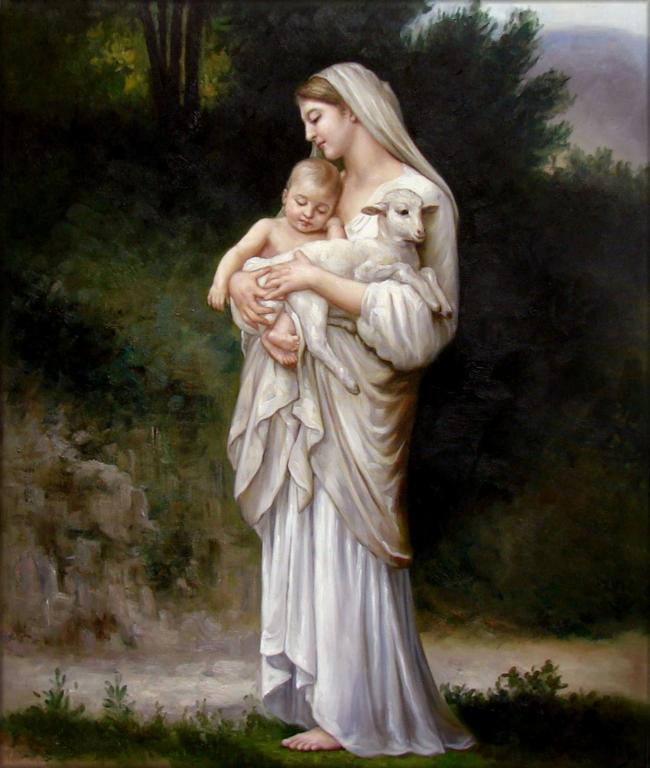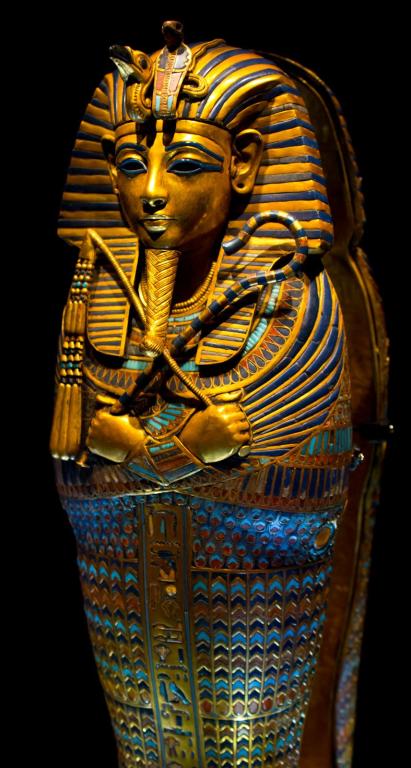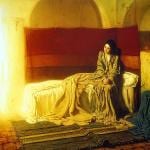
Wikimedia Commons public domain image
I share some takeaways here from an article that I’ve just read in BYU Studies Quarterly: John Hilton III, Jesse Vincent, and Rachel Harper, ““Last at the Cross”: Teachings about Christ’s Crucifixion in the Woman’s Exponent, the Relief Society Magazine, and the Young Woman’s Journal,” BYU Studies Quarterly 61/3 (2022): 31-58.
The Woman’s Exponent, which was published from 1872 to 1914, was evidently one of the earliest periodicals for women published in the United States (32), which seems difficult to reconcile with hostile claims that the Church of Jesus Christ of Latter-day Saints is simply oppressive to women and misogynistic. The Relief Society Magazine was published from 1914, when it replaced the Woman’s Exponent, until the new unified Church magazines were introduced in 1970. The Young Woman’s Journal appeared between 1889 and 1929. In all three cases, the editors were exclusively female and the authors were primarily female (32)
One recurring theme in the materials surveyed by the authors, appearing twenty-one times, was the idea that women were the last and the first, in ways that demonstrate their devotion to Jesus Christ—particularly that women were “last at his cross, and earliest at his grave.” This phraseology seems to be based upon a poem titled “Woman” by Eaton Stannard Barrett that is quoted and paraphrased more than once in the three magazines (where Eaton Stannard Barrett is, at least once, confused with Elizabeth Barrett Browning). In the poem, Barrett writes, “Not she with trait’rous kiss her Master stung, / Not she denied Him with unfaithful tongue; / She, when apostles fled, could danger brave, / Last at His cross, and earliest at His grave.” [“Woman” (London: Cox and Baylis, 1819), 34.]
Here, cited from page 43, are passages from Latter-day Saint authors in the three magazines surveyed that speak of the faith and devotion of women:
• “Women were last at the cross and first at the sepulchre, and it was to a woman that He first revealed Himself after His resurrection.”
• “First to greet lovingly man at his birth, Last to forsake him when dying,
First to make sunshine around his hearth, Last to lose heart and cease trying.
Last at the cross of her crucified Lord, First to behold him when risen,
First to proclaim him to life restored; bursting from death’s gloomy prison,
First to seek knowledge, the God-like prize, Last to gain credit for knowing.”• “‘Do to others as ye would they should do to you,’ that is ever helpful. It is that element which made her last at the cross and first at the sepulchre.”
As I’ve suggested in at least a few public presentations and perhaps also in print, I think it very significant that the first witnesses of the empty tomb and of the resurrection were women.
In 1904, a panel of judges that included James E. Talmage awarded Kate Thomas first prize for her poem “For Christmas.” I thought it a worthwhile find, and seasonally appropriate. So I share it with you here:
O beautiful mother Mary, O mother of croonings low,
Did you know more bliss in each fond kiss
Than we common mothers know?
His baby step she taught him, she put him gaily down
And laughed with pleased, low laughter when his fingers clutched her gown.
She taught him his first ‘Our Father,’ and as he lisped the prayer,
She bended her face till her lips found place
In the soft sheen of his hair.
O beautiful mother Mary, O Woman of women wise,
Did you see the End? Or did Father send
A kindly veil for your eyes?
She watched him grow into boyhood, with innocent eyes like his own
That wept when He came into manhood and the Load He must carry alone.
For the way of the Hill was heavy, and the Cross on the Hill was high,
And ’twas hard to look where whose sins He took
Were lusting to see Him die![Kate Thomas, “For Christmas,” Young Woman’s Journal 15/12 (December 1904): 532; “Prize Christmas Poems,” Young Woman’s Journal 15/12 (December 1904): 570.]

I’ve recently read two other articles in this same issue of BYU Studies:
- T. J. Uriona, “Rethinking the Rod of Iron,” BYU Studies Quarterly 61/3 (2022): 141-163. In this article, Uriona argues that we may be mistaken in visualizing the “rod of iron” in the dreams of Lehi and Nephi as a handrail or a balustrade. (I confess that this has been my conception of it.). Rather, he suggests — with a wealth of scriptural and other parallels — that it might more likely have been something like a shepherd’s staff or a scepter. Although he doesn’t mention them (to the best of my recollection), I couldn’t help while reading his article thinking of the familiar pharaonic flail and shepherd’s crook (as in the case of Tutankhamen, shown above) and of the common Homeric epithet, applied to leaders, of poimēn laōn (ποιμὴν λαῶν, “shepherd of the people”), which is essentially equivalent to another common Homeric epithet anax andrōn (ἄναξ ἀνδρῶν, “leader of men”). Both of them, for instance, are applied to Agamemnon.
- Kristian S. Heal and Zach Stevenson, “How the Book of Mormon Reads Ancient Religious Texts,” BYU Studies Quarterly 61/3 (2022): 103-121. Heal and Stevenson argue in this article that the Book of Mormon not only represents the recovery of an ancient extra-biblical text in itself but predicts the recovery of more such texts and offers us lessons in how to read them.
And I’ve already called these two very worthwhile articles to your attention:
- Michael A. Goodman and Daniel Frost, “Constancy amid Change: Latter-day Saint Discourse on Gender and Sexuality,” BYU Studies Quarterly 61/3 (2022): 191-217. This review essay critically examines Taylor Petrey’s book, Tabernacles of Clay: Sexuality and Sexual Difference in Modern Mormonism (Chapel Hill: University of North Carolina Press, 2020).
- Walker Wright and Don Bradley, ““None That Doeth Good”: Early Evidence of the First Vision in JST Psalm 14,” BYU Studies Quarterly 61/3 (2022): 191-217. In this article, Walker Wright and Don Bradley submit that the revision of Psalm 14 in the Joseph Smith Translation of the Bible offers indirect but strong and early evidence for the First Vision.
Posted from Cabo San Lucas, Mexico













